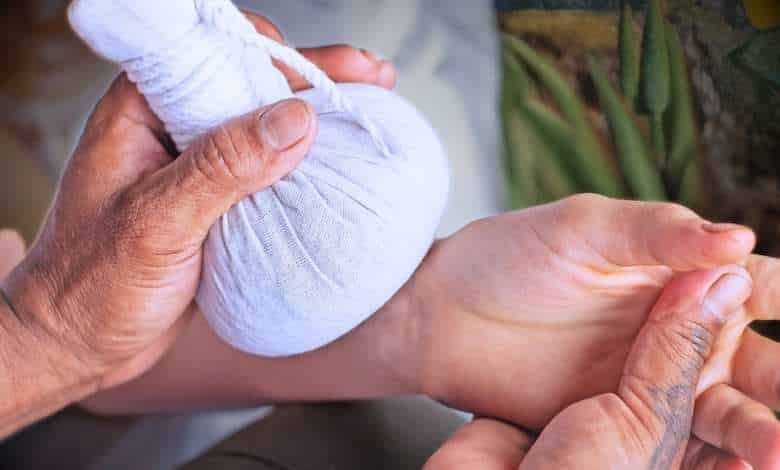Have you heard about someone close to you who suffers from diabetic complications? Then well, they are not alone. A lot of people around the world suffer from the complications of diabetes, like joint pain, numbness, tingling sensation, and heart, liver, and kidney diseases. Diabetes and its complications must be managed correctly with proper medications; otherwise, it can kill your life. Here, we discuss Ayurvedic treatment for diabetic arthropathy, a condition in which diabetes affects the joints.
What is diabetic arthropathy?
Diabetes is one of the significant lifestyle disorders across the globe. It is characterized by an increased blood glucose level and altered fat and protein metabolism due to defects in insulin (a hormone produced by the pancreas) secretion, sensitivity, or both.
Diabetes can be controlled with therapeutic and conservative measures. However, long-term damage from uncontrolled blood sugar levels can harm the nervous system, musculoskeletal system, kidneys, eyes, and heart.
Diabetes may affect the musculoskeletal system and lead to symptoms such as joint pain, joint damage, decreased joint movements, and difficulty performing daily activities. Diabetic arthropathy is the medical term for the condition when diabetes causes joint difficulties. Several studies have shown that people with diabetes also experience arthropathy.
What causes diabetic arthropathy?
High blood glucose levels in people with diabetes harm the blood vessels that provide the nerves with nutrition. Diabetic arthropathy can result from diabetic neuropathy brought on by nerve degeneration, which can also cause sensory loss. Increased joint laxity, instability, and recurrent microtraumas with suboptimal healing result in diabetic arthropathy, which can harm joints over time. Diabetes also alters the joint cartilage’s structural makeup, resulting in joint damage.
Common diseases caused by Diabetes.
Charcot’s foot/diabetic foot
Charcot’s foot is a complication of diabetes that affects the soft tissues, bones, and joints in the foot and ankles. The bones deteriorate gradually, causing pain, deformity, and difficulty walking. Charcot’s foot symptoms appear in people in their 50s or 60s who have had diabetes for at least ten years. Those with Charcot’s foot have a higher-than-average chance of getting diabetic ulcers.
The symptoms consist of the following:
- Discomfort or pain in the joints.
- Numbness in the affected region
- The affected area is hot to the touch.
- Changes in the appearance of the foot.
Carpal tunnel syndrome
Carpal tunnel syndrome occurs due to the compression of the median nerve as it passes through the wrist at the carpal tunnel. Carpal tunnel syndrome is widely seen in 15–20% of people with diabetes. It occurs due to carpal tendons becoming glycosylated (glucose attaches to the tendon protein and restricts it from moving freely).
The patient experiences pain, numbness, and tingling sensation in the thumb, index finger, middle finger, and the thumb side of the ring finger. The symptoms start gradually and increase at night. There will be a wasting of muscles and decreased hand grip in the later stages. The patient complains of pain extending to the arms in the final stage of the disease.
Dupuytren’s contracture
In Dupuytren’s contracture, the tissue beneath the surface of the hands and finger gets thickened and contracted, leading to the formation of tiny, hard lumps below the skin. The ring finger and little finger are commonly affected. Over time, the lump causes the finger to bend or pull sideways or towards the palm. The individual finds it difficult to lay the hand flat on a table or to perform activities.
Frozen shoulder
Frozen shoulder or adhesive capsulitis occurs when the ligaments around the shoulder joint stiffen and swell. People who have diabetes are more prone to develop this condition than other people. An increase in the blood glucose level results in glycosylation of the shoulder capsule (collagen in the shoulder capsule gets sticky by glucose attachment), resulting in the restriction of joint movement and shoulder stiffening.
The symptoms consist of the following:
- Freezing stage: Appearance of pain and reduced movement in the shoulder affecting daily activities.
- Frozen stage: Pain becomes manageable, and stiffness worsens, resulting in reduced motility of the joints.
- Thawing stage: The symptoms gradually start to resolve.
Osteoarthritis
Osteoarthritis is a common form of degenerative arthritis affecting the entire joint, resulting in pain, swelling, stiffness, and reduced mobility of the affected joints. Studies have proven that osteoarthritis and diabetes share common risk factors, such as age and obesity.
Increased blood glucose levels affect the cartilage cells and produce several enzymes, resulting in the breakdown of the same. Excess blood sugar levels promote the release of reactive oxygen and inflammatory protein, resulting in the degradation and death of the cartilage.
Rheumatoid arthritis
Rheumatoid arthritis is an autoimmune disease where the body’s immune system mistakenly attacks the healthy joints in the body. The patient experiences pain, inflammation, and swelling on the affected joint, which becomes permanently damaged over time.
People with diabetes have more than a 50% risk of developing rheumatoid arthritis compared to those who don’t. In the long term, insulin resistance develops in the body through the fat cells’ production of tumor necrosis factors. In rheumatoid arthritis, the immune system attacks the joints and produces tumor necrosis factors. Eventually, the production of tumor necrosis factor in a rheumatoid arthritis patient increases the risk of developing diabetes.
Medications like corticosteroids used for treating rheumatoid arthritis also increase the risk of developing diabetes, as it increases the blood sugar level in the body.
Ayurvedic management for diabetic arthropathy
The most crucial step needed to manage diabetic arthropathy is to maintain the blood sugar level. One must follow proper anti-diabetic medications, exercise, and dietary regimens to control diabetes. Kapha dosha increasing diets and activities such as Madhura, sheeta, snighda, guru aharas, lack of exercise and sedentary life must be avoided.
The line of treatment for vataja prameha upadrava is adopted to manage diabetic arthropathy. Mridu snehana is followed by mridu swedanas. The swedana procedures that can be opted for are Shastika Sali pinda sweda, Patra Pinda Sweda, etc. Udwartana and mild abhyanga can be performed to improve blood circulation and sensory stimulation. Vamana, virechana, and vasti can be done accordingly as per the patient’s condition. Medicines and therapies that are tridosha samaka, nadi balya and vedana sthapaka are helpful in diabetic arthropathy.
Preventive measures for diabetic arthropathy
- Always keep the blood glucose level within limits. Routinely check the blood glucose level.
- Moderate physical exercise must be practiced daily. Swimming, yoga, walking, or aerobic exercise can be adopted according to convenience.
- Avoid smoking and consumption of alcohol.
- Daily check the foot to confirm that wounds are not developing.
- Follow an anti-diabetic diet as per the advice of the physician.
- Mild oil massage can be done daily to stimulate the muscles and joints.
Diabetic arthropathies can lead to permanent and irreversible damage to the joints. If not treated properly, it can affect your day-to-day activities as well. So if you are experiencing any of the symptoms, contact a clinician as soon as possible.


